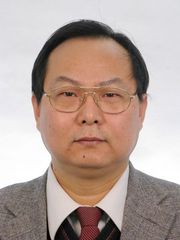Unveiling New Horizons in Rural Industry Development
Interlocutors:
Liu Gang, Director of the Nankai Institute of Economics, NKU
Sun Yilin, Commentator from Tianjin Daily

An integrated approach to new urbanization and all-round rural revitalization will facilitate the integrated development of urban and rural areas more comprehensively and deeply at a higher level. This will stimulate the internal momentum of rural revitalization, thereby realizing the modernization of agriculture and rural areas.
Sun Yilin: An integrated approach to new urbanization and all-round rural revitalization underscores the importance of the functional differences between urban and rural areas and values their distinctions. This approach aims to facilitate the flow of factors between urban and rural areas and promote division and cooperation between their respective economies. That reshapes the relations between urban and rural areas, so to speak.
Liu Gang: Indeed. Both rural and urban areas are important. We should not only be clear-eyed about their respective importance but also acknowledge their internal integrity in development. New urbanization and all-round rural revitalization are mutually reinforcing and integrated. Their combination does not simply imply that a rural area should “strive to become an urban area”. Instead, it signifies a departure from the pattern of isolated development and aims to unlock the flow of various resources and factors between urban and rural areas, leading to more reasonable resource allocation. For example, Tianjin upgrades modern urban agriculture to stimulate the vitality of rural development. A high-quality environment for development and living has been created, as agriculture and other industries mutually complement and reinforce each other.
Sun Yilin: Improving the development of the rural industry is a crucial step in integrating new urbanization and all-round rural revitalization efforts. Tianjin Base of Chinese Chives, located in Baodi District, is recognized as the largest corporatized Chinese chive production base in Northern China. The chives grown at this base are known for being green and pollution-free. They are sold in supermarkets in the Beijing-Tianjin-Hebei region, including Freshippo, Dingdong, and Wumart. Notably, Chinese chives from this base account for a significant market share, ranging from 70% to 80%, in the middle and high-end segments of the region’s market. New horizons in rural industry development are unveiled by closely monitoring market demand.
Liu Gang: Industrial restructuring plays a crucial role in achieving all-round rural revitalization and increasing farmers’ incomes. The progress of new urbanization drives the escalating demand for premium rural supplies in urban areas. This surge in demand presents a valuable opportunity for rural industrial restructuring and upgrading, as it creates a larger consumer market to cater to. Tianjin’s rural areas are abundant with agricultural resources (such as Shawo radishes and Chadian grapes), ecological resources, red resources, cultural heritage, and historical sites. With a keen focus on the vast and affluent market in the Beijing-Tianjin urban region, it is imperative to devise a well-thought-out plan for industrial innovation and fully explore the potential agricultural functions to facilitate the upgrading of the entire rural industry chain, based on market demand and local resource endowment. Only by doing so can the supply-demand cycle from rural areas to metropolises, fields to tables, and farmers to urban residents be unimpeded.
Sun Yilin: Scientific and technological innovation is a key driving force for industrial innovation. Enhancing its leading role will bolster the system of modern rural industry and play a pivotal role in facilitating the high-quality development of modern urban agriculture.
Liu Gang: Ultimately, all-round rural revitalization hinges on science and technology. Tianjin’s agricultural sector is not large, while the demand for agricultural products in its vast market is growing. It is essential to harness “science and technology” to increase the yield and improve the quality of agricultural products. For example, “Jingu sole” in Yangjiabo Town has gained “popularity” on the market due to its fresh and tender meat. Fish farmers have equipped fishponds with circulatory systems and intelligent testing devices while introducing new species. These efforts have resulted in high-quality fish meat and reduced farming costs. That means agricultural scientific and technological innovation has a profound impact on all sectors of the industry, spanning from the primary to the tertiary sectors. When we think outside the box, it becomes apparent that agriculture has the potential to integrate, interact, and coexist with innovation in various other domains. New generation information technologies, including the Internet, blockchain, and cloud computing, will be adopted throughout the agricultural industry chain by sharing, coordination, and other innovative approaches. These endeavors will lead to a remarkable transformation in agriculture.
Sun Yilin: Tianjin has a strong foundation for urban-rural integration. How can it leverage its resource endowments to further facilitate the integrated development of urban and rural areas, thereby achieving their respective prosperity and creating a harmonious and prosperous relationship between the two?
Liu Gang: Open-mindedness is crucial in facilitating the integrated development of urban and rural areas, leading to fresh experiences at a higher level. For example, Tianjin Agricultural Development Service Center, an agricultural technology promotion agency, focuses on the high-value-added strawberry industry. Through collaboration among “the government, research institutes, promotion agencies, enterprises, and farmers”, it has successfully established a new service model featuring digital agricultural technology. As a result, strawberry farming has become industrialized, standardized, and scaled up, with an average yield increase of 15%. Tianjin can foster a range of scientific technology promotion platforms and agricultural companies to lead the development of agricultural technology and quality agriculture. By doing so, the municipality can integrate and quickly apply the achievements of scientific and technological innovation in the development of quality agriculture. This approach can also enable farmers to quickly adapt to the modern industrial system. From another perspective, the continuous development of agriculture is not only improving the capacity of rural areas to absorb factors from urban areas but also providing more opportunities to attract experts, investments, and industries. That best explains the integrated development of urban and rural areas.